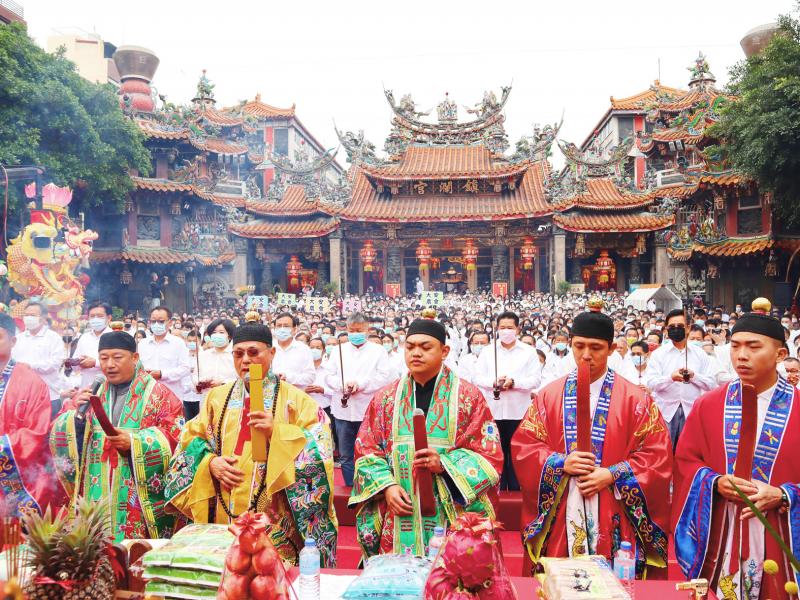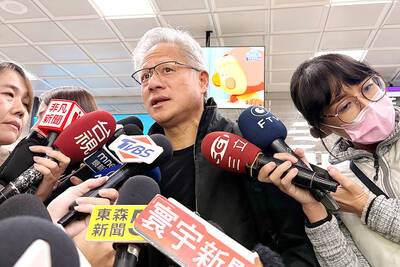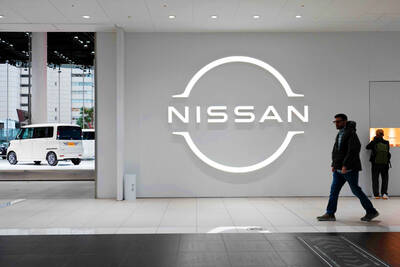Water levels in many of the nation’s reservoirs remain low, despite a weather system dumping significant rain in northern Taiwan last week.
Several major reservoirs in central and southern Taiwan, where the water shortage has been the most serious, were still at low capacity yesterday, Water Resources Agency (WRA) data showed.
As of 10am, the Baoshan Second Reservoir (寶二水庫), which provides water for the Hsinchu Science Park, was at 12 percent capacity.

Photo: Ou Su-mei, Taipei Times
Liyutan Reservoir (鯉魚潭水庫), which supplies water for Taichung and Miaoli County, and Zengwen Reservoir (曾文水庫) in Tainan, Taiwan’s largest reservoir, were at 15 percent respectively, the data showed.
Meanwhile, two major reservoirs in the north — Feitsui Reservoir (翡翠水庫) in New Taipei City and Shihmen Reservoir (石門水庫) in Taoyuan — were at 88 and 49 percent respectively, the data showed.
To cope with the drought, tap water pressure in Hsinchu County, Miaoli and Taichung has been lowered, and water would be trucked from Taoyuan to Hsinchu, the agency said.
Science and industrial parks in areas with no risk of land subsidence would be allowed to drill temporary wells, it said.
The wells would be sealed once the drought ends, WRA Deputy Director-General Wang Yi-feng (王藝峰) said.
However, former minister of economic affairs Yiin Chii-ming (尹啟銘) said that drilling wells might not help solve the issue, as groundwater levels fall during droughts, local Chinese-language media reported.
To appeal to higher powers amid the drought, the Irrigation Agency yesterday held a rain prayer ceremony at the Jenn Lann Temple (鎮瀾宮) in Taichung’s Dajia District (大甲), one of the nation’s largest temples where the sea goddess Matsu (媽祖) is worshiped.

PERSISTENT RUMORS: Nvidia’s CEO said the firm is not in talks to sell AI chips to China, but he would welcome a change in US policy barring the activity Nvidia Corp CEO Jensen Huang (黃仁勳) said his company is not in discussions to sell its Blackwell artificial intelligence (AI) chips to Chinese firms, waving off speculation it is trying to engineer a return to the world’s largest semiconductor market. Huang, who arrived in Taiwan yesterday ahead of meetings with longtime partner Taiwan Semiconductor Manufacturing Co (TSMC, 台積電), took the opportunity to clarify recent comments about the US-China AI race. The Nvidia head caused a stir in an interview this week with the Financial Times, in which he was quoted as saying “China will win” the AI race. Huang yesterday said

Nissan Motor Co has agreed to sell its global headquarters in Yokohama for ¥97 billion (US$630 million) to a group sponsored by Taiwanese autoparts maker Minth Group (敏實集團), as the struggling automaker seeks to shore up its financial position. The acquisition is led by a special purchase company managed by KJR Management Ltd, a Japanese real-estate unit of private equity giant KKR & Co, people familiar with the matter said. KJR said it would act as asset manager together with Mizuho Real Estate Management Co. Nissan is undergoing a broad cost-cutting campaign by eliminating jobs and shuttering plants as it grapples

The Chinese government has issued guidance requiring new data center projects that have received any state funds to only use domestically made artificial intelligence (AI) chips, two sources familiar with the matter told Reuters. In recent weeks, Chinese regulatory authorities have ordered such data centers that are less than 30 percent complete to remove all installed foreign chips, or cancel plans to purchase them, while projects in a more advanced stage would be decided on a case-by-case basis, the sources said. The move could represent one of China’s most aggressive steps yet to eliminate foreign technology from its critical infrastructure amid a

MORE WEIGHT: The national weighting was raised in one index while holding steady in two others, while several companies rose or fell in prominence MSCI Inc, a global index provider, has raised Taiwan’s weighting in one of its major indices and left the country’s weighting unchanged in two other indices after a regular index review. In a statement released on Thursday, MSCI said it has upgraded Taiwan’s weighting in the MSCI All-Country World Index by 0.02 percentage points to 2.25 percent, while maintaining the weighting in the MSCI Emerging Markets Index, the most closely watched by foreign institutional investors, at 20.46 percent. Additionally, the index provider has left Taiwan’s weighting in the MSCI All-Country Asia ex-Japan Index unchanged at 23.15 percent. The latest index adjustments are to